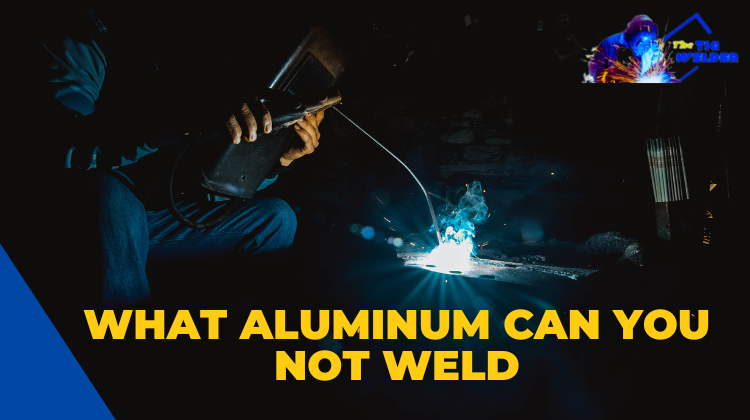Aluminum is a lightweight and highly conductive metal widely used in various industries, including aerospace, automotive, and construction. It is known for its corrosion resistance, strength, and ability to be formed into various shapes and sizes.
As a welding material, aluminum has unique properties that make it different from other metals. It has a low melting point, requiring lower heat inputs for welding than steel or other metals. It also has a high thermal conductivity, which means it can dissipate heat quickly and be more sensitive to overheating.
Several types of aluminum alloys are commonly used for welding, including aluminum-silicon alloys, aluminum-magnesium alloys, and aluminum-zinc alloys. Each alloy has different properties and characteristics that make them suitable for specific applications.
Overall, aluminum is a popular choice for welding due to its strength, corrosion resistance, and ability to be formed into various shapes and sizes. However, not all types of aluminum are suitable for welding, as certain alloys may have properties that make them difficult to weld or may not produce high-quality welds.

Types of Aluminum That Cannot Be Welded
Some types of aluminum cannot be welded using traditional welding methods. These include:
- Aluminum alloys with high silicon content: Aluminum alloys with a high percentage of silicon (greater than 12%) are generally unsuitable for welding. This is because the high silicon content can cause porosity and crack in the welds.
- Aluminum alloys with high magnesium content: Aluminum alloys with a high percentage of magnesium (greater than 5%) are also generally unsuitable for welding. This is because the high magnesium content can reduce the weldability of the material, leading to poor-quality welds.
- Cast aluminum: Cast aluminum, made by pouring molten aluminum into a mold to form a shape, is generally unsuitable for welding. This is because cast aluminum has a highly irregular grain structure, making it challenging to create strong and reliable welds.
While these types of aluminum may not be suitable for welding, alternative methods are still available for joining aluminum components, such as brazing, soldering, and riveting.
Reasons Why Certain Types of Aluminum Cannot Be Welded
There are some reasons why certain types of aluminum cannot be welded using traditional welding methods. These include:
- High silicon content causes porosity and cracking: Aluminum alloys with a high percentage of silicon (greater than 12%) are generally unsuitable for welding. This is because the high silicon content can cause porosity and crack in the welds. During welding, the silicon reacts with the aluminum to form a brittle compound called aluminum silicon carbide. This compound can cause porosity and crack in the welds, reducing the strength and integrity of the weld.
- High magnesium content reduces weldability: Aluminum alloys with a high percentage of magnesium (greater than 5%) are also generally unsuitable for welding. This is because the high magnesium content can reduce the weldability of the material, leading to poor-quality welds. Magnesium has a strong affinity for oxygen, and during the welding process, it can react with the oxygen in the air to form a brittle compound called magnesium oxide. This compound can weaken the welds and make them more susceptible to cracking.
- Cast aluminum has a highly irregular grain structure: Cast aluminum, made by pouring molten aluminum into a mold to form a shape, is generally unsuitable for welding. This is because cast aluminum has a highly irregular grain structure, making it challenging to create strong and reliable welds. The irregular grain structure can cause the welds to be weaker and more prone to cracking.
Overall, these factors can make it difficult to create strong and reliable welds using traditional welding methods on certain types of aluminum. Alternative methods like brazing, soldering, and riveting may be more suitable for joining these materials.
Alternative Methods for Joining Aluminum
Alternative methods can join aluminum components in cases where traditional welding is unsuitable or desired. These methods include:
Brazing: Brazing is a process in which a filler metal is melted and combined by joining two or more metal components. The filler metal is typically an alloy with a melting point lower than the base metals being joined but higher than the temperature required for soldering. Brazing is often used to join aluminum components because it can produce strong, reliable joints with minimal heat input.
Soldering: Soldering is a process in which a filler metal is melted and used to combine two or more metal components. The filler metal is typically an alloy that has a melting point lower than the base metals being joined. Soldering is often used to join aluminum components because it requires minimal heat input and can produce reliable joints with good electrical conductivity.
Riveting: Riveting is a process in which a fastener, called a rivet, joins two or more metal components together. Rivets are typically made of aluminum or other strong, corrosion-resistant materials. Riveting is a simple and reliable method for joining aluminum components, and it can be used to create strong and durable joints.
Overall, these alternative methods can join aluminum components in cases where traditional welding is unsuitable or desired. Each method has its advantages and disadvantages, and the appropriate method will depend on the specific application and requirements of the project.
Conclusion
In conclusion, aluminum is a popular and widely used material in various industries due to its strength, corrosion resistance, and ability to be formed into various shapes and sizes. However, not all types of aluminum are suitable for welding using traditional methods. Aluminum alloys with high silicon or magnesium content and cast aluminum can be complex to weld or may not produce high-quality welds.
Fortunately, alternative methods for joining aluminum components are available, including brazing, soldering, and riveting. These methods can create strong and reliable joints where traditional welding is unsuitable or desired.
Overall, it is essential to carefully consider the specific properties and characteristics of the aluminum being used in a project and the specific requirements and goals of the project to determine the most appropriate method for joining aluminum components.

It’s been years since I got into welding as a side hustle. It’s been so long since Doing All kinds of welds for business and pleasure as this is my hobby. Being in this field I have learned from hands-on-experience also came to know what gears work and what doesn’t. The Tig Welder is my own platform where I use to share my experience.






Leave a Reply